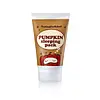What's inside
What's inside
 Key Ingredients
Key Ingredients

 Benefits
Benefits

 Concerns
Concerns

No concerns
 Ingredients Side-by-side
Ingredients Side-by-side

Water
Skin ConditioningHelianthus Annuus Seed Oil
EmollientGlycerin
HumectantBetaine
HumectantMethylpropanediol
SolventPolyacrylate Crosspolymer-6
Emulsion Stabilising1,2-Hexanediol
Skin ConditioningSimmondsia Chinensis Seed Oil
EmollientCarbomer
Emulsion StabilisingGlyceryl Caprylate
EmollientSodium Hyaluronate
HumectantSodium Hydroxide
BufferingSodium Phytate
O-Cymen-5-Ol
AntimicrobialTocopherol
AntioxidantPolyglutamic Acid
Skin ConditioningWater
Skin ConditioningCyclopentasiloxane
EmollientGlycerin
HumectantCyclomethicone
EmollientDimethicone
EmollientHydroxyethyl Acrylate/Sodium Acryloyldimethyl Taurate Copolymer
Emulsion StabilisingPEG-10 Dimethicone/Vinyl Dimethicone Crosspolymer
StabilisingSqualane
Emollient1,2-Hexanediol
Skin ConditioningCarbomer
Emulsion StabilisingPolysorbate 20
EmulsifyingTriethanolamine
BufferingPEG-10 Dimethicone
Skin ConditioningPhenoxyethanol
PreservativeAmaranthus Caudatus Seed Extract
Skin ConditioningUlmus Davidiana Root Extract
Skin ConditioningCentella Asiatica Extract
CleansingFicus Carica Fruit Extract
HumectantDimethicone/Vinyl Dimethicone Crosspolymer
Skin ConditioningPolysorbate 60
EmulsifyingCucurbita Pepo Fruit Extract
Skin ConditioningParfum
MaskingPortulaca Oleracea Extract
Skin ConditioningPueraria Thunbergiana Root Extract
Skin ConditioningCnidium Officinale Root Extract
Skin ConditioningGlycyrrhiza Glabra Root Extract
BleachingPaeonia Lactiflora Root Extract
Skin ConditioningSoluble Collagen
HumectantEthylhexylglycerin
Skin ConditioningAloe Barbadensis Leaf Juice
Skin ConditioningMannitol
HumectantBromelain
Skin ConditioningHydrogenated Lecithin
EmulsifyingPapain
Skin ConditioningBetaine
HumectantDipotassium Glycyrrhizate
HumectantSodium Hyaluronate
HumectantXanthan Gum
EmulsifyingCeramide NP
Skin ConditioningCI 15985
Cosmetic ColorantCI 17200
Cosmetic ColorantWater, Cyclopentasiloxane, Glycerin, Cyclomethicone, Dimethicone, Hydroxyethyl Acrylate/Sodium Acryloyldimethyl Taurate Copolymer, PEG-10 Dimethicone/Vinyl Dimethicone Crosspolymer, Squalane, 1,2-Hexanediol, Carbomer, Polysorbate 20, Triethanolamine, PEG-10 Dimethicone, Phenoxyethanol, Amaranthus Caudatus Seed Extract, Ulmus Davidiana Root Extract, Centella Asiatica Extract, Ficus Carica Fruit Extract, Dimethicone/Vinyl Dimethicone Crosspolymer, Polysorbate 60, Cucurbita Pepo Fruit Extract, Parfum, Portulaca Oleracea Extract, Pueraria Thunbergiana Root Extract, Cnidium Officinale Root Extract, Glycyrrhiza Glabra Root Extract, Paeonia Lactiflora Root Extract, Soluble Collagen, Ethylhexylglycerin, Aloe Barbadensis Leaf Juice, Mannitol, Bromelain, Hydrogenated Lecithin, Papain, Betaine, Dipotassium Glycyrrhizate, Sodium Hyaluronate, Xanthan Gum, Ceramide NP, CI 15985, CI 17200
 Reviews
Reviews

Ingredients Explained
These ingredients are found in both products.
Ingredients higher up in an ingredient list are typically present in a larger amount.
1,2-Hexanediol is a synthetic liquid and another multi-functional powerhouse.
It is a:
- Humectant, drawing moisture into the skin
- Emollient, helping to soften skin
- Solvent, dispersing and stabilizing formulas
- Preservative booster, enhancing the antimicrobial activity of other preservatives
Betaine is a common humectant (a substance that promotes retention of moisture). It's known to be gentle on the skin and can help balance hydration.
This ingredient is best for improving hydration and soothing irritated skin. Studies also show it helps even out skin tone.
Fun fact: Betaine is naturally created in the skin and body. The kind found within cosmetic products can be either plant-derived or synthetic.
Another name for betaine is trimethylglycine.
Learn more about BetaineCarbomer is a polymer of acrylic acid. Its main role is to create a gel consistency.
A high amount of carbomer can cause pilling or balling up of products. Don't worry, most products contain 1% or less of carbomer.
Glycerin is already naturally found in your skin. It helps moisturize and protect your skin.
A study from 2016 found glycerin to be more effective as a humectant than AHAs and hyaluronic acid.
As a humectant, it helps the skin stay hydrated by pulling moisture to your skin. The low molecular weight of glycerin allows it to pull moisture into the deeper layers of your skin.
Hydrated skin improves your skin barrier; Your skin barrier helps protect against irritants and bacteria.
Glycerin has also been found to have antimicrobial and antiviral properties. Due to these properties, glycerin is often used in wound and burn treatments.
In cosmetics, glycerin is usually derived from plants such as soybean or palm. However, it can also be sourced from animals, such as tallow or animal fat.
This ingredient is organic, colorless, odorless, and non-toxic.
Glycerin is the name for this ingredient in American English. British English uses Glycerol/Glycerine.
Learn more about GlycerinSodium Hyaluronate is hyaluronic acid's salt form. It is commonly derived from the sodium salt of hyaluronic acid.
Like hyaluronic acid, it is great at holding water and acts as a humectant. This makes it a great skin hydrating ingredient.
Sodium Hyaluronate is naturally occurring in our bodies and is mostly found in eye fluid and joints.
These are some other common types of Hyaluronic Acid:
Learn more about Sodium HyaluronateWater. It's the most common cosmetic ingredient of all. You'll usually see it at the top of ingredient lists, meaning that it makes up the largest part of the product.
So why is it so popular? Water most often acts as a solvent - this means that it helps dissolve other ingredients into the formulation.
You'll also recognize water as that liquid we all need to stay alive. If you see this, drink a glass of water. Stay hydrated!
Learn more about Water